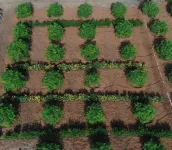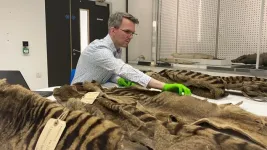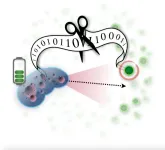(Press-News.org) Walking at a speed of 4 or more km an hour is linked to a significantly lower risk of type 2 diabetes, suggests a pooled data analysis of the available evidence, published online in the British Journal of Sports Medicine.
And the faster the speed above 4 km/hour, the lower the risk seems to be, with every 1 km increase in speed associated with a 9% reduction in risk, the findings suggest.
While regularly nipping out for a stroll is associated with a lower risk of developing type 2 diabetes, it’s not clear what the optimal speed might be to ward off the disease, say the researchers.
The global number of adults with type 2 diabetes is currently 537 million, but is expected to reach 783 million by 2045, so a simple and inexpensive physical activity that is also associated with several other social, mental, and physical health benefits, might be an easy way of helping to stave off the disease, they add.
They looked for relevant long term studies published up to May 2023 and found 10 that were eligible for inclusion. These had all been published between 1999 and 2022 and included monitoring periods ranging from 3 to 11 years for a total of 508,121 adults from the USA, Japan, and the UK.
Pooled data analysis of the results showed that compared with strolling at less than 2 miles or 3 km/hour, an average or normal walking speed of 2-3 miles or 3-5 km/hour was associated with a 15% lower risk of type 2 diabetes, irrespective of the time spent walking.
Similarly, fairly brisk walking at a speed of 3–4 miles/hour or 5–6 km/hour was associated with a 24% lower risk of type 2 diabetes compared with strolling.
Brisk walking or striding at a speed above 4 miles or 6 km/hour was associated with a reduced risk of around 39%, equal to 2.24 fewer cases of type 2 diabetes in every 100 people.
Every 1 km/hour increase in walking speed was associated with a 9% lower risk of type 2 diabetes, with the minimal threshold of 4km/hour equal to 87 steps/min for men and 100 steps/ min for women, the findings suggest.
The researchers acknowledge that 3 studies were rated as having a moderate risk of bias while the other seven were rated as having a serious risk, principally due to inadequate adjustment for potentially influential factors and the way in which walking speed had been assessed.
Another factor to consider is reverse causality whereby participants with faster walking speed might be more likely to be physically active and have better cardiorespiratory fitness, greater muscle mass, and better overall health status.
So the findings need to be interpreted in light of these limitations, caution the researchers. But there are plausible explanations for the findings, they explain.
Walking speed is an important indicator of overall health and a key indicator of functional capacity; faster walking speed is associated with better cardiorespiratory fitness and muscle strength, both of which are linked to diabetes risk; and brisk walking is good for weight loss, which helps to improve insulin sensitivity.
They conclude: “The present meta-analysis of cohort studies suggests that fairly brisk and brisk/striding walking, independent of the total volume of physical activity or time spent walking per day, may be associated with a lower risk of type 2 diabetes in adults.
“While current strategies to increase total walking time are beneficial, it may also be reasonable to encourage people to walk at faster speeds to further increase the health benefits of walking.”
END
Faster walking speed of 4 km+/hour linked to significantly lower type 2 diabetes risk
Every 1 km increase in speed is associated with a 9% reduction in risk, findings suggest
2023-11-29
ELSE PRESS RELEASES FROM THIS DATE:
Five-fold rise in UK rates of transgender identity since 2000, medical records suggest
2023-11-29
UK rates of transgender identity have risen 5-fold since 2000, with the highest rise observed among 16 to 29 year olds, although the overall numbers are still small, suggests an analysis of nearly 20 years of anonymised general practice records, published online in the open access journal BMJ Medicine.
And rates of people identifying as transgender were more than twice as high in the most socially and economically deprived areas as they were in less deprived areas, the analysis shows.
A solid grasp of the numbers and ages of those identifying as transgender is essential ...
6+ hours/day of sedentary leisure time linked to doubling in fibroids risk
2023-11-29
Clocking up 6 or more hours of sedentary leisure time every day may double a woman’s risk of uterine fibroids before she’s gone through the menopause, suggests research published in the open access journal BMJ Open.
The risk of these benign, but potentially large and painful, womb growths seems to rise in tandem with the amount of time spent sitting or lying down during the day, the findings suggest.
Uterine fibroids are the most common benign tumours in women of childbearing age, varying in prevalence from 4.5% to 69%, say the researchers.
These growths may not produce any symptoms, but they may also be associated with abnormal bleeding, pelvic and abdominal pain, ...
Increase in the number of people identifying as transgender in the UK
2023-11-29
The number of people identifying as transgender in their GP records in the UK has increased between 2000 and 2018, finds a new study led by UCL researchers.
The research, published in BMJ Medicine, is the first large-scale study in the UK to estimate the number of people whose gender identity is different to their sex assigned at birth.
To do this, the team reviewed anonymised data from 7 million individuals aged 10 to 99 years, from IQVIA Medical Research Data, a UK primary care database, between 2000 and 2018.
Researchers looked for diagnostic codes that suggested patients had spoken to their GP about ...
Flower power on Indian farms helps bees and boosts livelihoods
2023-11-29
Planting flowers beside food crops on farms in India attracts bees, boosts pollination and improves crop yield and quality, researchers have found.
The research, the first Indian study of its kind, is published today (Monday, 28 November) in the Journal of Applied Ecology and was carried out in South India by ecologists from the University of Reading, UK, and the M S Swaminathan Research Foundation, India.
The scientists focused on the Moringa crop, a nutrient-rich "superfood," and its essential pollinators – bees.
By planting companion marigold flowers and ...
Historical violence in Tasmania: Victorian collector traded human Aboriginal remains for scientific accolades, study reveals
2023-11-29
A Hobart-based solicitor built his reputation as “the foremost scientist in the colony” in the mid-1800’s, despite limited contributions to scientific knowledge.
Morton Allport achieved his status by obtaining the bodily remains of Tasmanian Aboriginal people and Tasmanian tigers, also known as thylacines, and sending them to collectors in Europe – specifically asking for scientific accolades in return.
This took place in the context of a genocide against the Tasmanian Aboriginal peoples, and persecution of the thylacine that eventually led to its extinction.
The new research by Jack Ashby, Assistant Director of the University Museum of Zoology, Cambridge, ...
Network of robots can successfully monitor pipes using acoustic wave sensors
2023-11-29
An inspection design method and procedure by which mobile robots can inspect large pipe structures has been demonstrated with the successful inspection of multiple defects on a three-meter long steel pipe using guided acoustic wave sensors.
The University of Bristol team, led by Professor Bruce Drinkwater and Professor Anthony Croxford, developed approach was used to review a long steel pipe with multiple defects, including circular holes with different sizes, a crack-like defect and pits, through a designed inspection path to achieve 100% detection coverage for a defined reference defect.
In the study, published today in NDT and E International, ...
How do you make a robot smarter? Program it to know what it doesn’t know
2023-11-29
Modern robots know how to sense their environment and respond to language, but what they don’t know is often more important than what they do know. Teaching robots to ask for help is key to making them safer and more efficient.
Engineers at Princeton University and Google have come up with a new way to teach robots to know when they don’t know. The technique involves quantifying the fuzziness of human language and using that measurement to tell robots when to ask for further directions. Telling a robot to pick ...
Researchers working to develop next-generation polymer membranes for sustainable materials science
2023-11-28
Michele Galizia, a President’s Associates Presidential Professor in the School of Sustainable Chemical, Biological and Materials Engineering at the University of Oklahoma, is leading a research team that recently received a grant from the U.S. Department of Energy that will develop improved polymer membranes to advance molecular separation and related materials science.
“We currently separate chemicals, gases and liquids using a thermal-based distillation technology that is very expensive to operate and consumes the equivalent of eight GJ of electricity per person on the planet per year,” ...
Researchers have applied the theory of semantic information to a realistic model capturing attributes of living systems—and found the critical point where information matters for survival
2023-11-28
Living systems—unlike non-living or inanimate objects—use information about their surrounding environment to survive. But not all information from the environment is meaningful or relevant for survival. The subset of information that is meaningful, and perhaps necessary for being alive, is called semantic information.
In a new paper published in PRX Life, University of Rochester physicists and their coauthors have, for the first time, applied this theory of semantic information to a well-known ...
Growing microtumors in a dish helps rapidly identify genes that drive tumor growth
2023-11-28
Researchers have identified a new way to screen genes that cause several different types of cancers to grow, identifying particularly promising targets for precision oncology in oral and esophageal squamous cancers.
The study, published in this month’s issue of Cell Reports, used 3-dimensional models of organ tissues called organoids to identify and test potential gene targets from The Cancer Genome Atlas.
“There’s a tremendous amount of data in The Cancer Genome Atlas, ...
LAST 30 PRESS RELEASES:
Why nail-biting, procrastination and other self-sabotaging behaviors are rooted in survival instincts
Regional variations in mechanical properties of porcine leptomeninges
Artificial empathy in therapy and healthcare: advancements in interpersonal interaction technologies
Why some brains switch gears more efficiently than others
UVA’s Jundong Li wins ICDM’S 2025 Tao Li Award for data mining, machine learning
UVA’s low-power, high-performance computer power player Mircea Stan earns National Academy of Inventors fellowship
Not playing by the rules: USU researcher explores filamentous algae dynamics in rivers
Do our body clocks influence our risk of dementia?
Anthropologists offer new evidence of bipedalism in long-debated fossil discovery
Safer receipt paper from wood
Dosage-sensitive genes suggest no whole-genome duplications in ancestral angiosperm
First ancient human herpesvirus genomes document their deep history with humans
Why Some Bacteria Survive Antibiotics and How to Stop Them - New study reveals that bacteria can survive antibiotic treatment through two fundamentally different “shutdown modes”
UCLA study links scar healing to dangerous placenta condition
CHANGE-seq-BE finds off-target changes in the genome from base editors
The Journal of Nuclear Medicine Ahead-of-Print Tip Sheet: January 2, 2026
Delayed or absent first dose of measles, mumps, and rubella vaccination
Trends in US preterm birth rates by household income and race and ethnicity
Study identifies potential biomarker linked to progression and brain inflammation in multiple sclerosis
Many mothers in Norway do not show up for postnatal check-ups
Researchers want to find out why quick clay is so unstable
Superradiant spins show teamwork at the quantum scale
Cleveland Clinic Research links tumor bacteria to immunotherapy resistance in head and neck cancer
First Editorial of 2026: Resisting AI slop
Joint ground- and space-based observations reveal Saturn-mass rogue planet
Inheritable genetic variant offers protection against blood cancer risk and progression
Pigs settled Pacific islands alongside early human voyagers
A Coral reef’s daily pulse reshapes microbes in surrounding waters
EAST Tokamak experiments exceed plasma density limit, offering new approach to fusion ignition
Groundbreaking discovery reveals Africa’s oldest cremation pyre and complex ritual practices
[Press-News.org] Faster walking speed of 4 km+/hour linked to significantly lower type 2 diabetes riskEvery 1 km increase in speed is associated with a 9% reduction in risk, findings suggest





